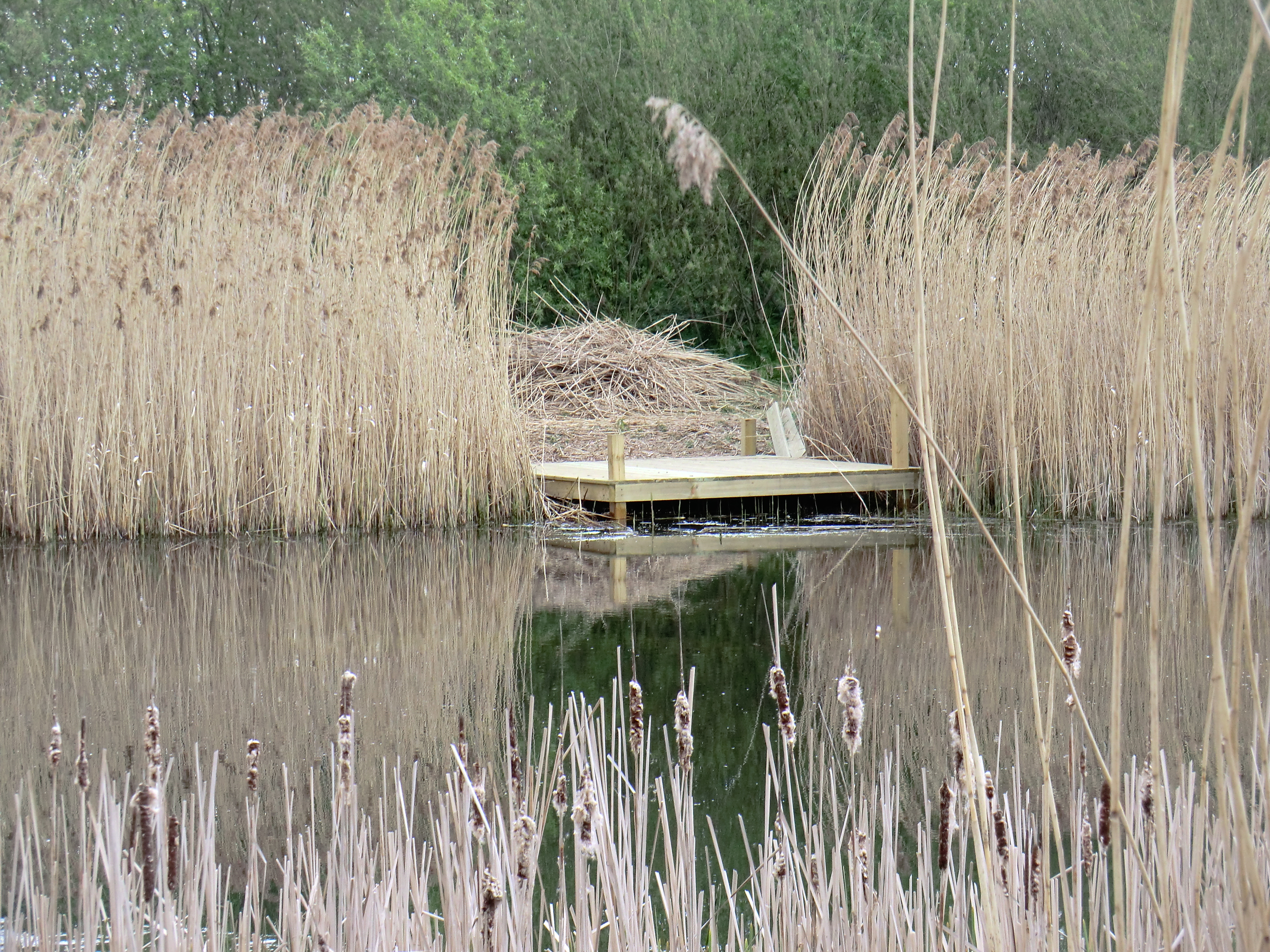As we approach the end of November and the beginning of December, pond work season is underway for the SNCV. Volunteers have been getting back into the waders and braving the cold waters to clear out ponds once again. Pond work is usually carried out at this time of year, because clearing ponds during the colder months minimises any disturbance to wildlife. Several of Sutton’s nature reserves contain ponds or open bodies of water, including Anton Crescent Wetlands, Kimpton Balancing Pond and Carew Manor Wetlands, to name a few.
Pond work at this time of year usually consists of thinning out Common Reed (Phragmites australis) and Greater Reedmace or Bulrush (Typha latifolia); ‘slubbing out’ to keep the waters flowing freely, and coppicing scrub surrounding the pond to reduce shading and allow more light to reach the water’s surface. Thinning out reeds and reedmace is an important step in pond management, as it helps ensure that the process of ‘succession’ (the steady build up of silt and plant debris which results in edge plants growing into the middle of the pond, leading to the pond filling with vegetation and eventually wet woodland) is prevented. Reedmace can grow very vigorously in ponds under the right conditions, and if left unchecked, it can quickly become dominant and clog up open water with silt.
The best way of removing reedmace is to don the waders and pull out the the entire plant from the pond, removing the roots to prevent rapid regrowth. Although it can become dense and overgrown, it is also important to leave some stands, as reedmace provides a valuable habitat for a number of invertebrates including the tiny reedmace bug (Chilacis typhae) which feeds within the flowering heads, and hoverflies (e.g. Anasimyia contracta).

Pond work begins at Carew Manor Wetlands
Volunteers also maintain trees and scrub that grow along the banks of the ponds. If these become overgrown they can shade out emergent plants such as water mint (Mentha aquatica) and suberged aquatics like water starwort (Callitriche sp.), which provide amphibians with areas for refuge and egg-laying. Overgrown trees can also cause nutrients to build up in the pond when their leaves drop, encouraging undesirable species, such as duckweed (Lemna sp.) to carpet the surface of the pond.
With pond works under way for this season, watch this space for more updates and pictures of our progress!
Eleanor Kirby-Green
SNCV Biodiversity Assistant








1 Pingback